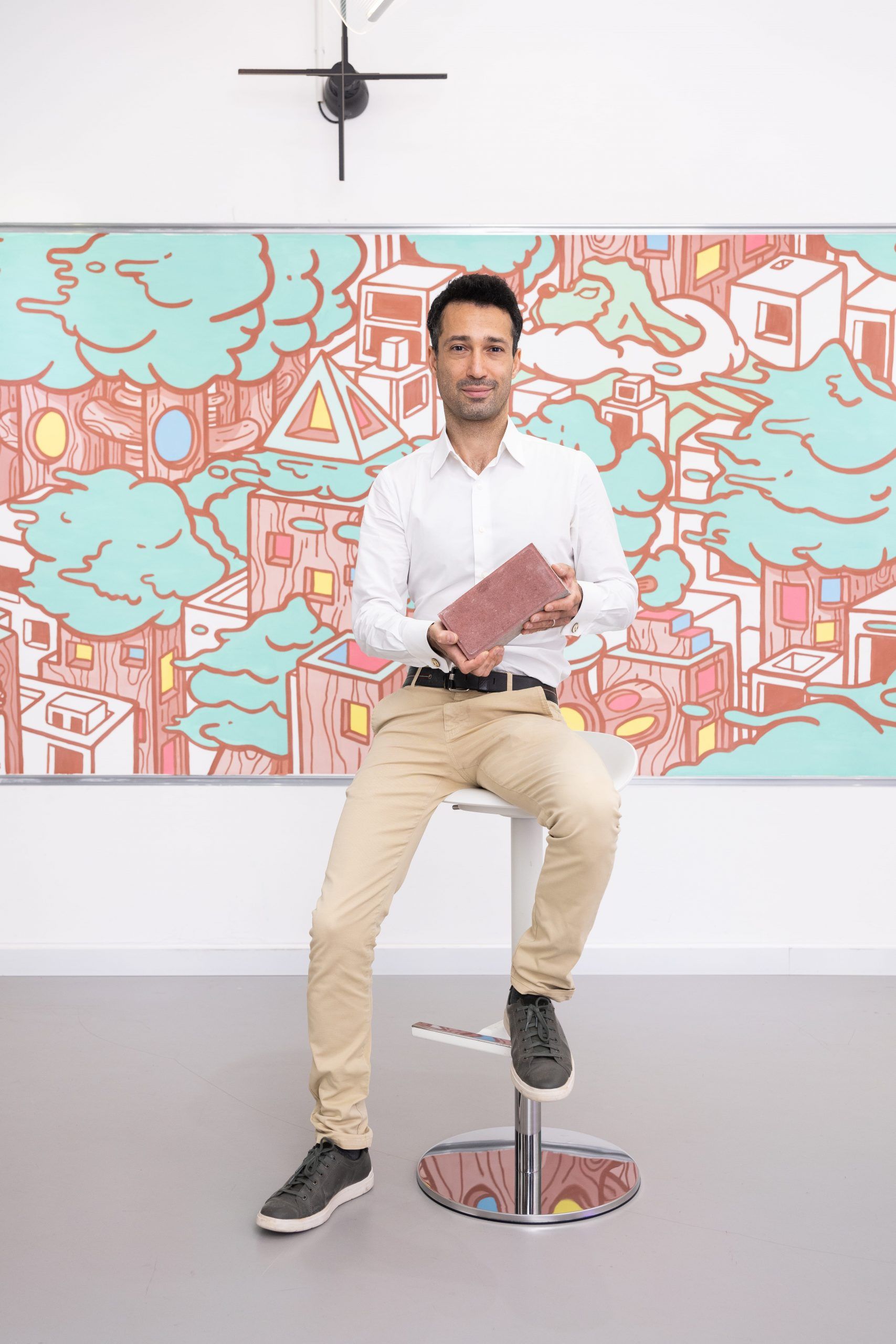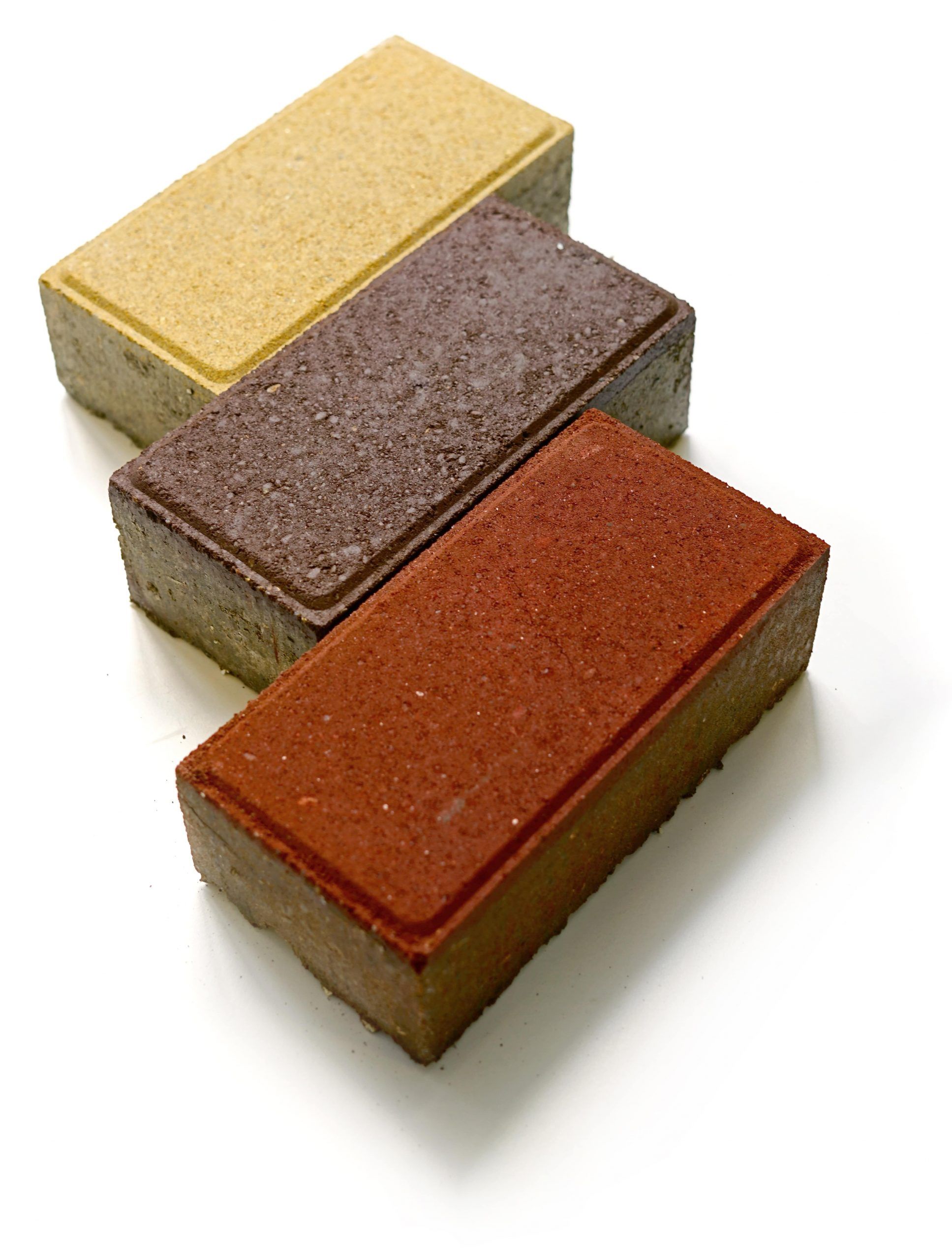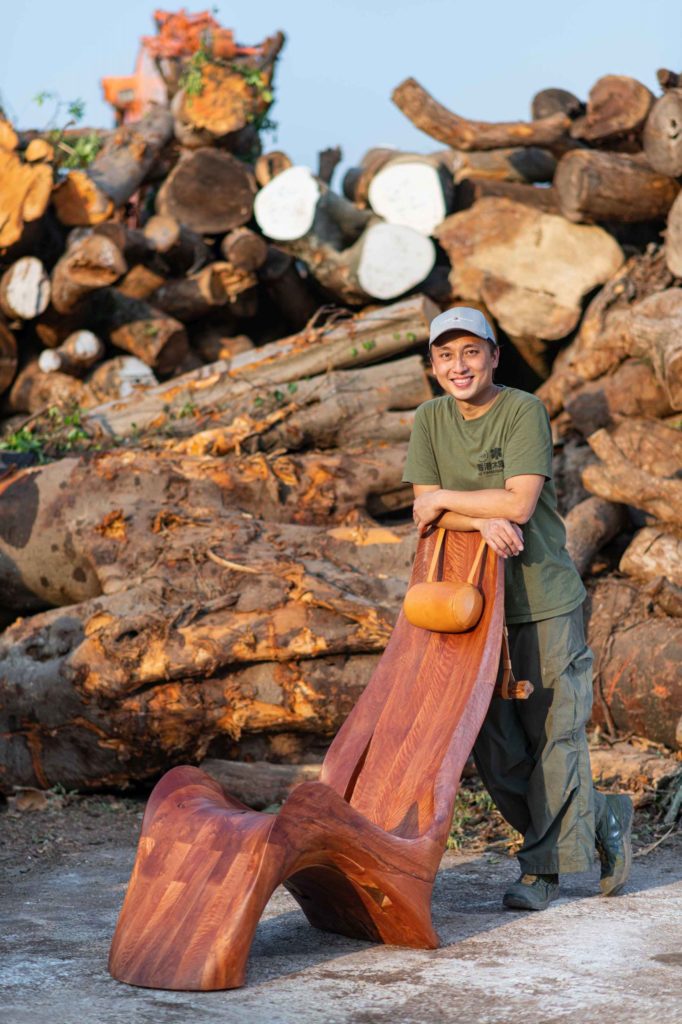Climate change, recessions and housing crises are only a handful of problems that encourage architects to explore alternative construction materials. Shervin Sharghy, founder of EcoBricks, and HK Timberbank CEO Ricci Wong explain where Hong Kong stands in the move towards sustainable architecture and discuss what the future holds.
RICCI WONG
Ricci Wong’s background is in architecture and design. Although founder and CEO of HK Timberbank, he had no prior carpentry experience; instead, his eco-social enterprise that upcycles local timber in Hong Kong grew out of a series of serendipitous events. In 2018 the supertyphoon Mangkhut uprooted many thousands of trees, blocking roads and footpaths. Without existing upcycling infrastructure for timber, all the fallen trees were sent straight to the landfill. As an interior designer, Wong uses expensive imported wooden building parts and was baffled why Hong Kong builds skyscrapers on top of skyscrapers yet is unable to make use of its own high-quality raw material. Confused and frustrated, he decided to take matters into his own hands.
Tell us about HK Timberbank.
We started in 2019 with the aim to bring second life to local timber in Hong Kong. We’ve now recycled more than 300 tonnes and roughly 80 species of trees at our 15,000-square-foot facility in Yuen Long. Collaborating with local arborists, our young team of carpenters are equipped with various machines, such as an industrial sawmill and dry kiln, to upcycle trees found around the city. We’ve successfully turned salvaged timber into commercial building materials, retail furniture and outdoor art installations.
What was the biggest hurdle when you started?
At the beginning I didn’t even know where to start. We experienced the common problems a start-up team would run into – lack of manpower and operating space – and when it comes to handling timber, the demand for both resources is exceptionally high. Additionally, the degree of information
vacuum on local timber was so vast that we had to learn everything from scratch. Thanks to YouTube I learned how facilities in other countries have been harvesting and utilising local timber. After sourcing my first batch from the landfill in 2019, I worked with local arborists to identify different types of wood. It was bizarre how we have more than 300 species in Hong Kong but barely any studies have been conducted to learn more about them.

Tell us about some of your most interesting projects.
Using reclaimed royal poinciana, we custom-made coffee tables for Penicillin, a beautiful eco-conscious bar on Hollywood Road, with sustainable design elements that pay homage to local heritage.
We’ve also created an art installation for the Yim Tin Tsai Arts Festival in 2021. I was the first artist to be chosen for the project. Even though the festival has ended, our art piece is still on display on the island. The timelessness of this exhibition is very significant to me – it has a sense of continuation that I think is rare in Hong Kong, where most things are on offer for a limited time only.
I’m also excited about our “wood library”. Through samples we’ve gathered from local timber, we’ve conducted scientific research to determine density, pattern, oxygen and carbon dioxide cycle and growth rate between different species. We’re building our archive slowly but
surely, and I hope our research can influence policy changes to make plantation more purpose-driven in our city. Planting specific types of trees in suitable surroundings can transform the environment, while planting a greater variety of trees will improve bio diversity. We’re also collaborating with local institutions to further our carbon research.
Together, we could bequeath a better- looking city with higher living standards to future generations.
What are the biggest obstacles to sustainable architecture in Hong Kong?
In Hong Kong, we lack city-wide awareness and support for the movement. Like us, other players in the game are independent and mostly self-funded. As for ourselves, in spite of making strides towards achieving our objectives, 99 percent of uprooted trees are still being sent to landfills. Even if we’re successful as a business, that’s not enough to bring about real change in our city.
How can the use of sustainable building materials be accelerated in Hong Kong?
Substantial backing from policy makers and corporate investors will make a big difference. Government support is increasing, but it’s not enough at this point to push for significant changes. However, projects such as Y Park – a government initiative recycling yard waste into usable materials – make me hopeful that gradually things will improve.
Industry awareness is also important. Major players in architectural and engineering fields could sway policy makers by promoting and providing education on the importance of sustainable construction. Organisations like BEAM, which encourage and assist the local building industry to move towards sustainable development, need to grow in size and number in order for green architecture to advance on a mass scale.
What’s next for your venture?
I hope to find a piece of land of at least 1 to 2 hectares in size – that’s the minimum requirement for FSC certification – to continue everything we’re currently doing on a scale that would create real impact. We’ll continue to grow our “wood library” to act as a useful and reliable data archive for the public; our research can easily be applied to plantation efforts in Southern China, as the area has a similar climate and tree species to Hong Kong’s.
We also hope to expand our ESG programmes to educate the process of upcycling and the importance of environmental protection. And last but not least, I want to build sizeable wooden architectural structures using our own timber.
Shervin Sharghy

Shervin Sharghy grew up in the UK close to the sea. An avid swimmer and surfer, even during chilly British winters, he witnessed first-hand how plastic was increasingly polluting the waters and beaches he grew up around. As an adult – and now a scuba diver – Sharghy has seen the situation worsen, and cannot understand how modern technology can invent everything from plant-based meats and self-driving cars to cryptocurrencies and commercial space vehicles, but is unable to solve the seemingly basic problem caused by our own waste. Driven by this frustration, his passion project to come up with solutions to waste reduction has resulted in EcoBricks, in which virtually any plastics can be turned into high-quality building materials.
Tell us about EcoBricks.
By turning plastic waste into sustainable concrete, EcoBricks addresses two major environmental challenges: the global plastic waste crisis and the sustainability of our built environment.
Plastic waste recycling rates across the world are still far too low. This is due to a variety of complex challenges. We set out to reimagine the conventional concept of plastic recycling and overcome many of its inherent limitations, thus enabling us to increase the amount of waste plastic that can be economically upcycled.
On the other hand, global building stocks are forecast to double by 2050. This unprecedented level of construction will come with a massive carbon footprint and consume staggering amounts of finite resources and raw materials. Reducing the impact of this man-made infrastructure isn’t an option – it’s a fundamental obligation. The potential to turn our unmanageable plastic waste burden into raw materials for our future built environment and architecture is incredibly exciting and limited only by our imagination and innovation.
What was your biggest hurdle when you started?
The biggest initial challenge was understanding the “why”. I needed to have a firm grasp of the problem before I could start thinking of possible solutions. The waste and recycling industry is highly complex and differs markedly from one country to another, so the problems, challenges and potential solutions vary depending on where you look. There’s also limited public information available, so to put the pieces of the puzzle together, it was very much a case of reaching out and talking to people directly.

Tell us about some of your most interesting projects.
We were fortunate to partner with Sino Group for our first project in Hong Kong at the Gold Coast development in Tuen Mun. We used 15,000 EcoBricks to repave the waterfront promenade and build a wall along the Leaf Path. This small project alone upcycled 5.4 tonnes of waste plastic.
We’re also working with Sino Group on other projects at Olympian City and the Fullerton Ocean Park Hotel Hong Kong.
What are the biggest obstacles to sustainable architecture in Hong Kong?
Manufacturing in Hong Kong is very challenging. Land with the necessary permits is incredibly scarce and among the most expensive in the world. This poses a significant challenge in developing home- grown circular economy solutions on a scale that can make a major impact.
How can the use of sustainable building materials be accelerated in Hong Kong?
Regulation, policy and testing protocols are, by their nature, backward looking. They’re calibrated for what already exists. There needs to be a more forward-looking pivot in order to foster new innovations and allow them to be trialled and tested in real-world environments.
Industry also needs to play its part. Start-ups that are innovating in this field need the support of the big players to provide platforms and opportunities to showcase their solutions and bring them to market. There’s been some positive momentum here and we look forward to seeing more.
What are your thoughts on the future of sustainable architecture?
I have absolutely no doubt that every aspect of our built environment and architecture will need to incorporate sustainability at its core in the future. Minimising the harm caused when we build is an obligation and not merely a nice-to-have. It’s an irreversible trend that we at EcoBricks are ready and willing to play our part in.
What’s next for your venture?
We’re continuously looking at how we can make our products more sustainable by incorporating local waste and industrial by-products other than plastic. Following successful trials, we’re also working to scale-up our production facility so we can increase the amount of plastic we can upcycle, and supply more EcoBricks for some exciting future projects.
